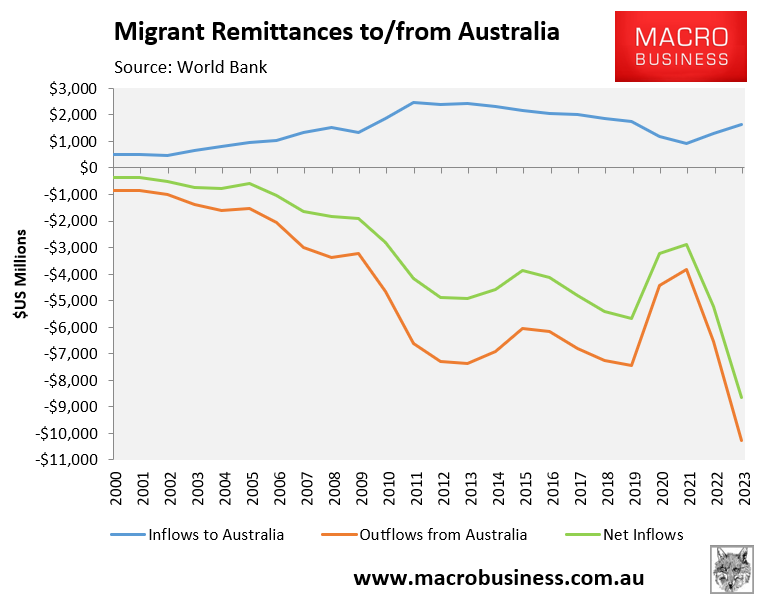Centre for Independent Studies (CIS) chief economist, Peter Tulip, was at it again, spreading propaganda about Australia’s fantastical $48 billion of education exports:

“Education is our fourth-largest export market; it’s how we pay for our imported TVs and cars and clothes. If you stifle our export markets, our quality of living goes down and we can’t pay for all of those good things”, Tulip told The SMH.
Tulip’s argument is nonsensical for multiple reasons.
First, the Australian Bureau of Statistics (ABS) wrongly classifies all expenditure by international students as an export, even when the money used to pay for this expenditure is earned in Australia.
Given that most international students work while studying to pay their expenses, this automatically renders the $48 billion export figure null and void.
Second, students are the only class of visa (not including tourists and working holiday makers) whose expenditure is counted as an export.
Therefore, when a student visa holder works driving an Uber and fills up on petrol, it is counted as an export. But when a worker in Australia on a skilled visa does likewise, it is not counted as an export. It is nonsensical.
Third, if international education was such an important export, then why did Australia lose a record $8.5 billion (~$A12.5 billion) in net migrant remittances in 2023?

And why has the net outflow in migrant remittances tracked the rise in student visas?

Money flowing out of Australia is indicative of international education being an import not an export. Either way, it flies in the face of the ABS’ rubbery $48 billion international education export figure.
Finally, universities are non-profit organisations and do not pay tax.
Therefore, how do these “exports”, even if they were genuine, pay for “all of those good things” that Tulip boasts about? They certainly are not helping to fund government infrastructure and services.
Perhaps Peter Tulip should discuss the matter with his CIS colleague, Salvatore Babones, who comprehensively debunked the notion that international education is a major export (if it is an export at all):
[The $48 billion export figure] is based on the fantastical model that a typical international student saves up the full cost of tuition, housing, meals, and incidentals, transfers it to an Australian bank, and then lives on that money for the duration of stay in Australia.
This may be true for a small number of elite university students. But university students make up only 45% of the international student total, and most of those are non-elite.
Just watch the 2019 Four Corners special Cash Cows to find out how things really work at a typical university, and then remember that most international students are not even in universities, but in low-level vocational and English-language courses.
The idea that all (or even a substantial portion) of the money spent by these students is transferred from abroad, rather than earned in Australia, is flatly ridiculous.
To see that, just remember the uproar that broke out in 2020 when Scott Morrison refused to extend JobKeeper and JobSeeker to international students. Most international students in Australia work very hard, but the fact is that they come to Australia primarily to work, not to study.
The tuition they are required to pay is simply part of the cost of their work visas…
In short, the entire international student industry is, in essence, a giant immigration scam.
If this is the type of analysis and propaganda coming from Australia’s chief economists, then Australia truly is in trouble.

